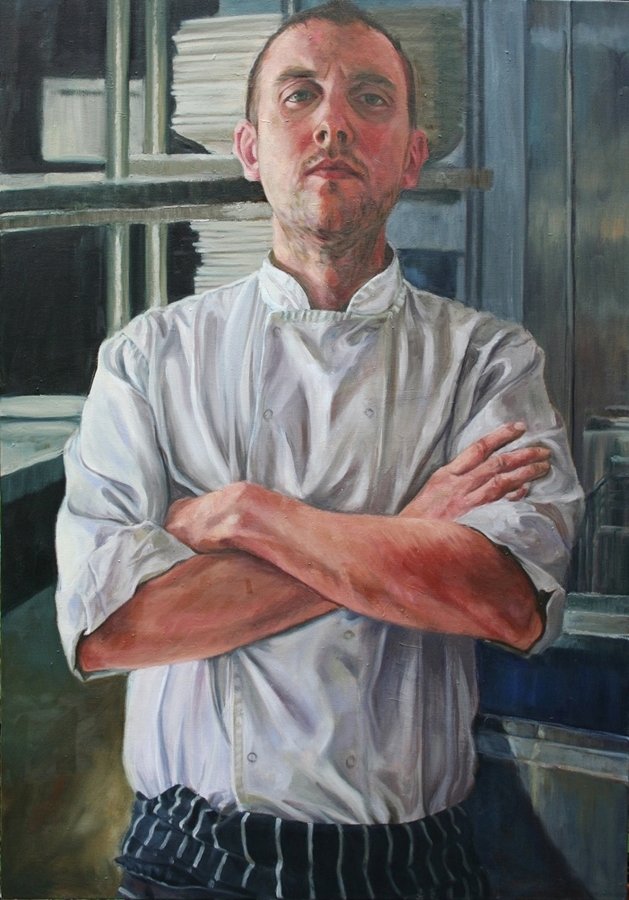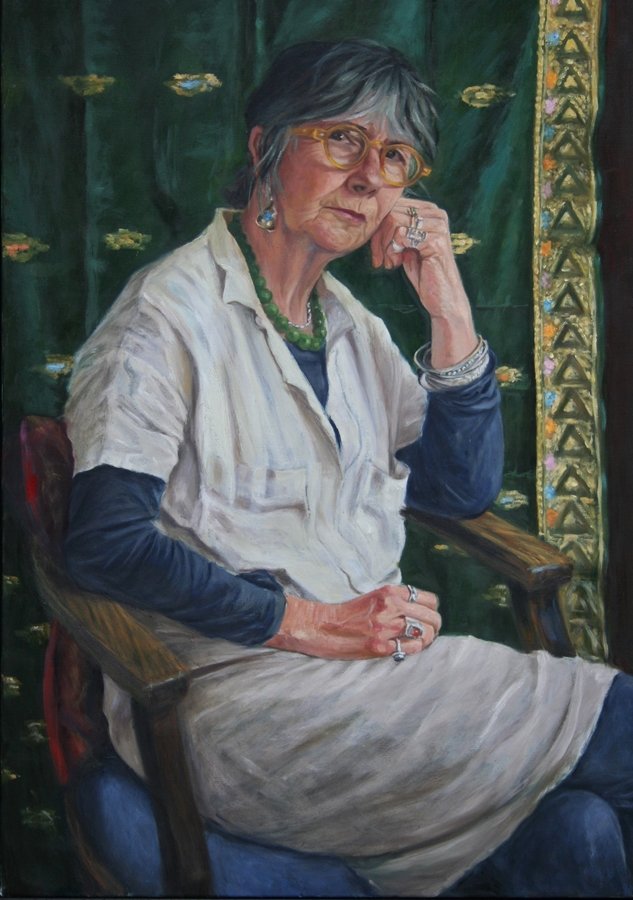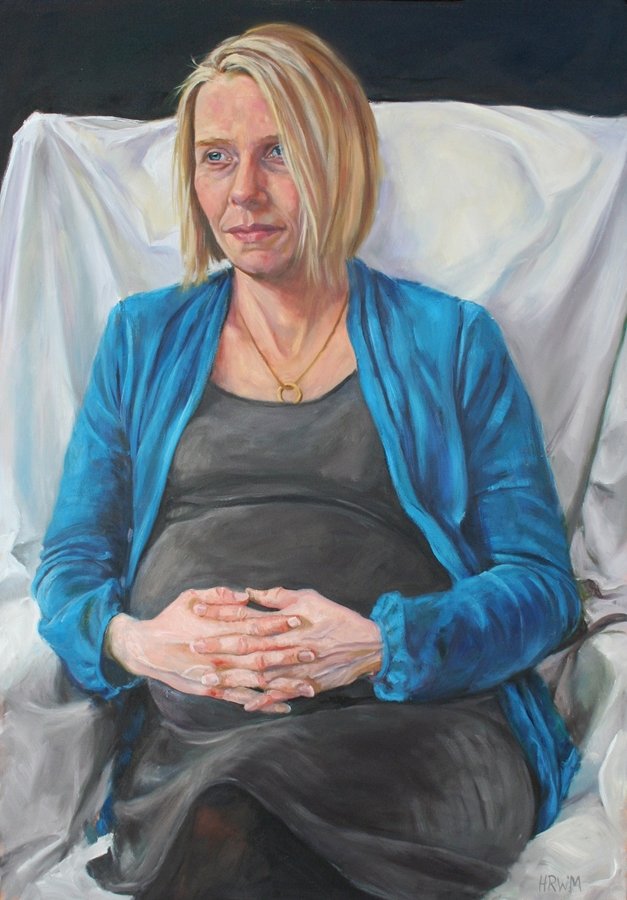ARTIST INTERVIEW: Rosie McClelland
Please introduce yourself. What sparked your interest in art?
My name is Rosie McClelland and I am a visual artist and art tutor.
There was always the smell of linseed oil and turpentine in our house growing up. My mother painted, mainly Irish landscapes, and my grandfather before her. She would set up her easel in the front (good) room and paint when she had a few spare hours after work or at weekends. Occasionally she would take evening classes with well-known Irish artists, and I would tag along with her.
The seeds were sown from an early age and, fortunately, cultivated at the school I attended in my teens. There was an excellent art department with a head of department who saw my potential and encouraged my desire to attend art college.
I truly believe positive feedback and encouragement is vital to the creative process and it is something that is central to my role as an art tutor.
What do you find fascinating about painting the human figure? Are there any human features that you particularly enjoy painting?
It was at after-school figure drawing sessions in the art rooms that I developed my love of drawing the human body. In foundation college in Belfast, I can still remember that first proper life-drawing session, it was magical, time seemed to disappear. I still organise monthly life drawing sessions. It’s professional practice, a bit like a musician practising the scales.
After a fashion and textile degree in Manchester in the early 70s, I studied fashion illustration at St Martin’s School of Art in London. This involved studying the human figure from live models almost every day for a year. Sometimes we, as students, were allowed to register to model for the day, a welcome supplement to our student grants! When I’m teaching life or figure drawing, I encourage people to try to take up the pose themselves to feel the pull or tension of the muscles.
What fascinates me is the gestural aspect - that the slightest movement of a head, a hand or a twist of the body can change the mood and meaning of a pose. Portraiture is not just about the head and facial features, the way someone holds themselves, what they do with their hands, how they tilt their head, all becomes important and can reveal an insight into their personality. I love Maggi Hambling’s painting of the astrophysicist Dorothy Hodgkin, where she has painted multiple hands giving us an insight into the busy mind of the sitter.
What do you look for in a potential figure to paint? What do you believe are the characteristics of a strong composition?
Unless it’s a commission, most of my portraits or figure paintings are either family or friends and it is often during normal discourse that the spark of a potential painting is ignited. It can be a simple gesture reflecting an attitude or a side of their personality, or maybe just the stage they’re at in life at that time. “Expectant” is a portrait of my daughter-in-law when she was heavily pregnant. (exhibited with the Royal Hibernian Academy).
It could also be a particular lighting, their surroundings, or the clothes they’re wearing that I find interesting as in the bright orange dress and the pink dyed hair of my daughter. “Jessica”
I am fascinated by the attention to detail in the fabric drapes of renaissance artists such as Albrecht Durer or the Spanish Baroque artist Francisco de Zurbarán.
I have painted my son, a chef, several times, twice in his chef’s uniform. The first one showed him as a young commis chef tentatively entering the painting from the right and the next, some years later, as head chef, standing firmly in the middle of the canvas in a much more self-assured pose with the backdrop of his kitchen pass. “Chef” (exhibited with the Royal Ulster Academy)
I like to position my subjects close to the picture plane either life size or slightly larger.
Thinking about your still life paintings, what is the significance of the objects you choose?
In some ways my still life paintings are like mini portraits. I like to use familiar objects and compose them in such a way as to create a tension within the space of the picture plane. Many years ago, while living in Germany, I visited a Giorgio Morandi exhibition. It was fascinating to see how he drew and painted the same objects repeatedly, pushing the boundaries of composition to their limits. The older he became, the fewer marks he needed to portray his objects until all the noise disappeared and only the relevant parts remained.
I am presently working on a series of vegetable still life paintings, taking something like the mundane cabbage and elevating it as in “Resting Savoy” or “Fennel Bulbs” These still life paintings will often involve white linen cloths. There is a very strong linen history in Ireland, almost every family has ancestors who worked in some way for the linen trade. On special occasions my mother would put away her paints, dismantle the easel and lay the table for tea in the “good” drawing-room. A crisp white linen tablecloth would be spread out with, of course, the best china teacups. The Linen Basket
Tell me about your inspiration for your portrait, ‘Geraldine in the Summer House’. Describe your process from start to finish of this piece.
My sister, Geraldine, has long been one of my muses. I have drawn and painted her many times.
In August 2019, I visited her in her home in Warrington where she and her husband have created a truly inspirational oasis of a garden with vegetables, a herb garden, a silver birch grove, a labyrinth and a summer house, in the middle of a busy, built-up area. The summer house is full of well-loved objects and furnishings which were recycled from the main house, all of which reflect Geraldine’s exuberant personality. While we were sitting having tea, the late afternoon sun poured in creating a wonderful light. Having just been to the Sorolla exhibition in Dublin’s National Gallery, colour and light were uppermost in my mind. I did a couple of sketches, took lots of photos and made notes on where the sunlight was landing – mainly on her knees! The gesture of the pose is very typical of her, relaxing, deep in creative thought, writing poetry or editing photos on her iPad or phone. Everything fell into place for a painting which turned out to be not only a portrait of Geraldine but also of the summer house.
You use a variety of mediums in your practise. How do they reflect the mood/narrative of your work? Which is your favourite medium and why?
I paint mainly in oils but like to experiment with different drawing media. As I also run art classes, I need to be able to use and demonstrate many different techniques. When I was studying at St Martin’s, I was given a set of soft pastels as a birthday present and have loved them ever since. They make wonderful marks and give instant saturation which doesn’t fade or darken. If you look at Degas’ pastel paintings, they are as fresh as the day he painted them.
However, oils are my favourite medium, I love the process of putting paint on, scraping it off, knocking it back and building up in layers until the paint reaches the effect I want. It’s the perfect medium for someone who changes her mind frequently during the painting process.
What does a typical day look like for you in the studio?
I usually head for the studio after walking the dog. If I have a painting in progress, I’ll continue with that, or if it’s coming to an end, I will start thinking about the next. I get too involved with what I’m painting to jump between 2 or 3 pieces simultaneously. Sometimes, I can work for hours one day on a painting and think it’s going the right way then come into the studio the next morning and decide it just isn’t working, it needs changing, even obliterating, and starting again!
Setting up a still life can take some time until I’m happy with the positioning and relationship of the objects - the light, the angle etc. I like to work from life as long as possible, of course sometimes that involves replacing withered fruit or vegetables!
If I’m working on a commissioned portrait, I may arrange the studio for a sitting.
Occasionally I find myself in a vacuum, unable to motivate myself in which case I might look at old sketchbooks for ideas or do some preparation for my classes and workshops.
How does your artwork represent you as an individual? Are you a perfectionist?
No, I’m not a perfectionist, far from it. My work tends to be quite intimate and quiet. There isn’t a ‘message”, it’s personal, a direct response to the subject matter and to the paint.
Out of all your artwork, which piece are you most proud of and why?
It’s hard to pinpoint one piece. I like to think I’m still evolving as an artist and, I hope, improving with each work. The painting I’m most proud of might not be painted yet! There are a couple, though, which stand out “Geraldine in the Summerhouse” and “Beverly” merely because I can still look at them with a sense of satisfaction.
What has been your biggest achievement so far as an artist? Has there been any challenges?
Although I am very grateful for having had the chance of exhibiting in some prestigious places and alongside excellent artists, I think my main achievement is that I’m still painting despite any challenges I may have faced over the years. It wasn’t always easy, as a single parent, to find the time or energy to paint, however, I am fortunate that both my children have always respected my artistic practice.
Why do you think art is important in society?
Art is a means of communication and can be a powerful tool for reflecting and even changing society. It can encourage us to see the world from another angle, spark debate, gain insight into so-called social norms and help us to think laterally.
On the other hand, it can also be a form of meditation, a source of calm and healing. Each of us will interpret art differently but society would be a barren place without it.















